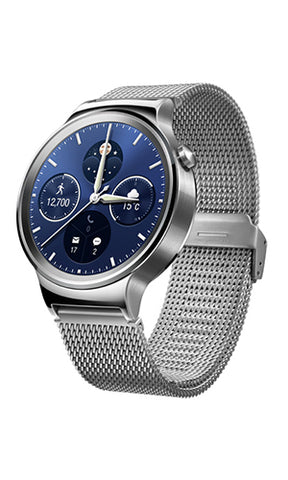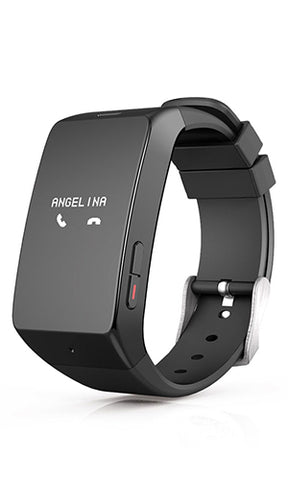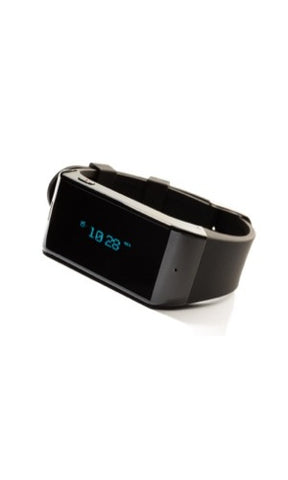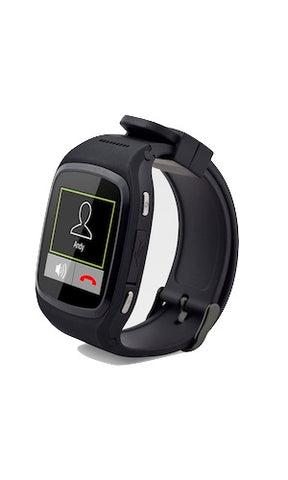Watches Are For Consumers, Glasses Are For The Enterprise
Written By
Wearables.com
The following is a guest post by Kyle Samani, Co-Founder and CEO of Pristine.io. All views expressed are his own.
From watches to socks, shirts to wristbands, glasses to rings, wearables promise all kinds of features to make our lives better. Thus, everyone seems to be building new wearables or software to run on them. The hottest sectors for wearables currently are twofold: wristbands such as FitBit, Jawbone, Basis, Microsoft Band, Android Wear devices, and the Apple Watch (collectively dubbed “Smartwatches” for the rest of this post) and smart eyewear such as Google Glass, Meta, Vuzix, and more (henceforth “smart glasses“).
Smartwatches are primarily being adopted by consumers, and smart glasses by the enterprise, and their adoption is driven by widely different reasons. Why the split?
It’s all about marginal utility
Many consumers react negatively to smart glasses like Google Glass because of two hardware traits: the outward-facing camera and the omnipresent screen. The general argument is that smart glasses come with both a massive invasion of privacy (via the camera), and the ultimate manifestation of our always connected, culture (via the screen). Although these sentiments aren’t really valid, the fact that most people hold these opinions will slow adoption in the consumer market for at least a few years.
On the other hand, smartwatches don’t face any socio-cultural challenges. They just need to solve some basic consumer problems to create value and justify their cost. Indeed, there are all kinds of reasons for consumers to purchase a smartwatch, leading to to a burgeoning smartwatch market for consumers. The entrance of Apple entering the market is proof enough that we can expect fast growth in the consumer smartwatch space.
Enterprises, on the other hand, are much more objective buyers. Broadly speaking, they pay for products and services for one of two reasons: to reduce costs or to drive revenue.
What business problems can smartwatches solve that phones can’t?
The use of wearables in corporate wellness initiatives to reduce employer healthcare costs has shown some early ROI success, in terms of ROI.
But in most cases, and particularly when we talk about leveraging wearables to help employees do their primary job, the business case for buying employees smartwatches is pretty thin. Smartwatches are basically an extension of the smartphone, but with additional, strict limitations around screen size and battery. It’s these restrictions that pose a problem for their use in day-to-day work. Though smartwatches are technically hands-free devices, they impose material restrictions on their wearers that will prevent wide-scale adoption for enterprise field applications:
- Smartwatches require the wearer to turn his/her arm, which may not not be possible in certain scenarios.
- Many field workers wear specialized gloves and sleeves that would prevent a watch from functioning correctly.
- Smartwatches can’t display much information because of the small screen.
- Smartwatches lack robust input mechanisms for documentation.
On the other hand, smart glasses can be used in almost any hands-on situation, and are a perfect fit for mobile field workers:
- Smart glasses can rest comfortably under protective gear, and can be sanitized for use in sterile areas such as operating rooms and semi-conductor fabs.
- Smart glasses offer large screens that can render more information
- Voice activation on smart glasses obviates any comprises in hand-based ergonomics
- Most smart glasses have a camera, a great tool for documentation and remote support and assistance.
This isn’t all theory, though.
Gartner predicts a $1B savings in the field service industry by 2017, a prophecy that industry players seem to be fulfilling. Companies from oilfield services to remote assistance are actively and publicly investigating ways to use smart glasses in their business. The manufacturing industry has been particularly quick to realize the value of smart glasses by deploying them on the factory floor.
Consider a production line: in this setting, perhaps more than any other, calculating the economic value of uptime is simple. Just count the number of widgets that roll off the line per day, multiply by revenue per item, and scale for % uptime. When an incremental reduction in downtime can recapture significant amounts of lost revenue, the math of smart glasses is rather simple. If a wearable-equipped onsite staff member can get a conveyor belt or laser etcher up and running quickly with the help of a remote expert, extended downtime is avoided, materially increasing revenue. Plus, the OEM has avoided travel expense for their field engineer, and satisfied their SLA at a dramatically lower cost. In other words, the price of glasses represents a mere fraction of the potential ROI.
At Pristine, we’re driving the very future outlined above. Our partners–spanning more than two dozen organizations across healthcare, medical devices, manufacturing, and field service–empower their mobile workers to communicate, collaborate, and document in the field, 100% hands free. Our customers are trading airline trips and complex workforce scheduling concerns for instant hands-free video support. More importantly, their customers are getting expert support instantly, and resolving issues faster. We’re on the crest of a huge wave–are you ready for it?
About the Author: Kyle Samani is a Co-Founder and CEO of Pristine, the leading company pioneering Google Glass in enterprise and healthcare settings. Reach him at @KyleSamani and @PristineIO.
The post Watches Are For Consumers, Glasses Are For The Enterprise appeared first on Wearables.com.
Tags: Featured Items, Smart Glasses, Smartwatches






